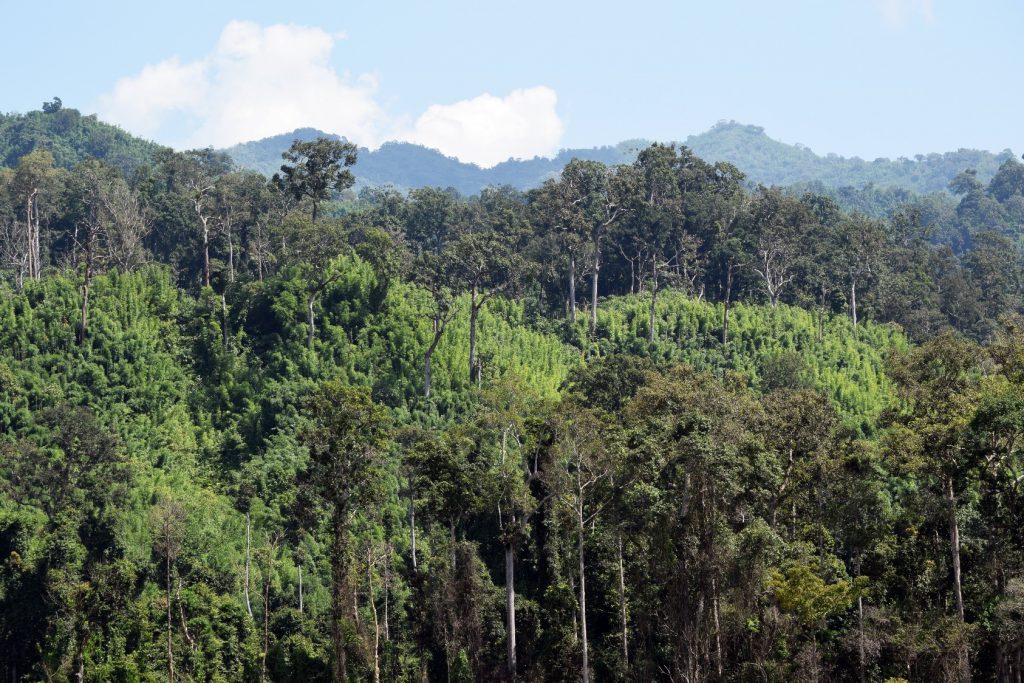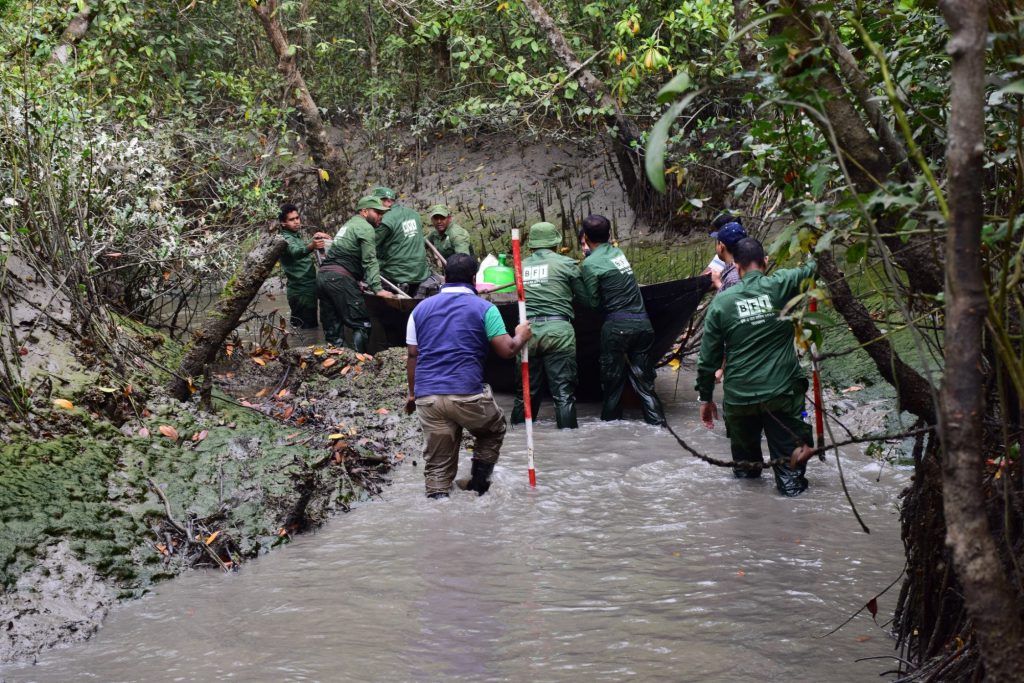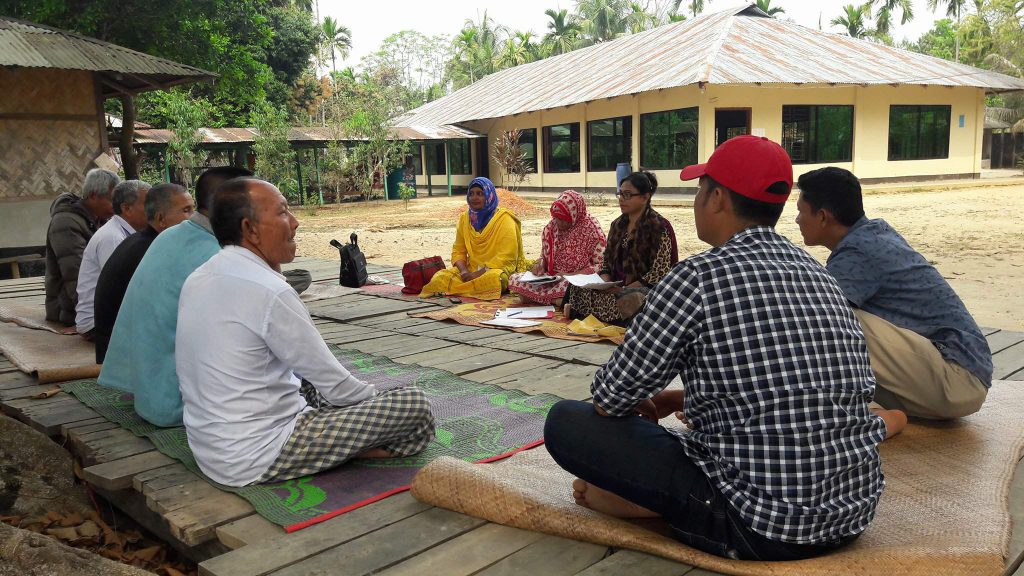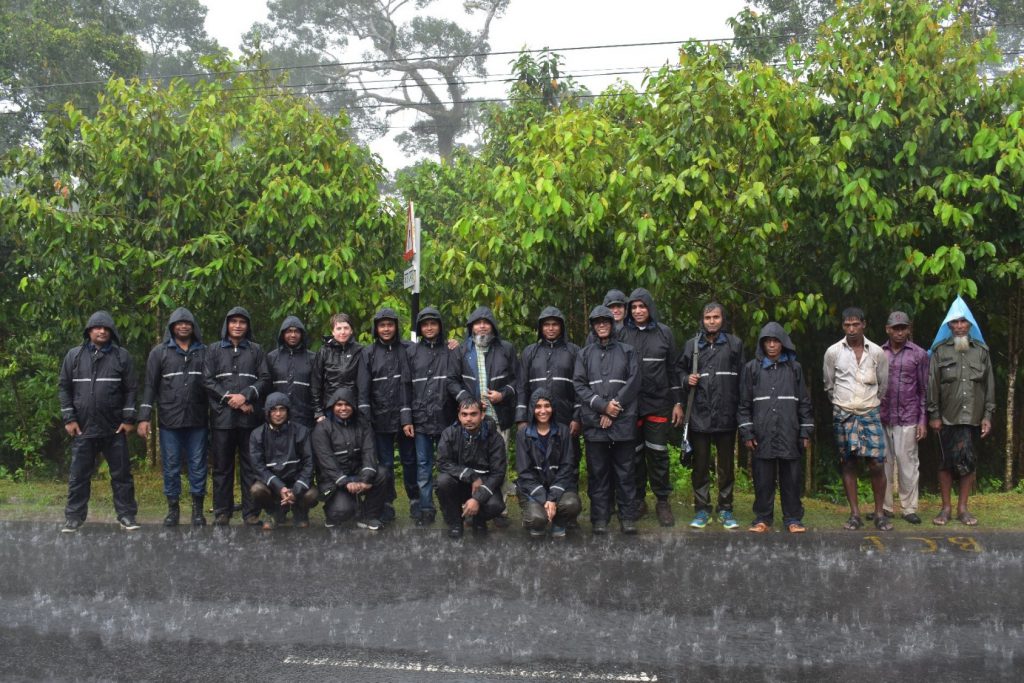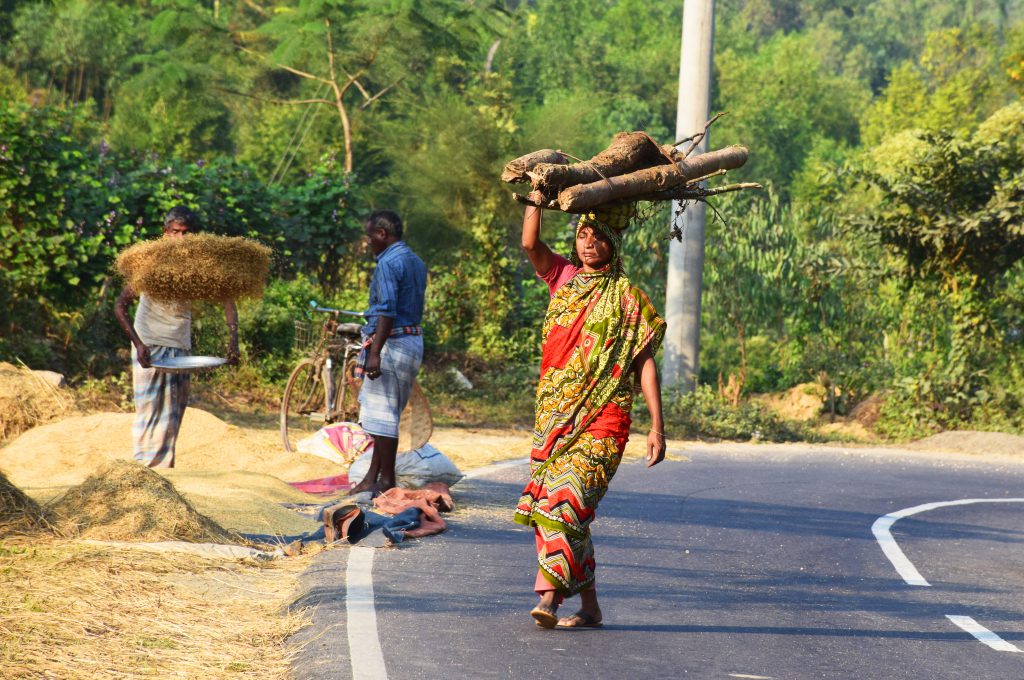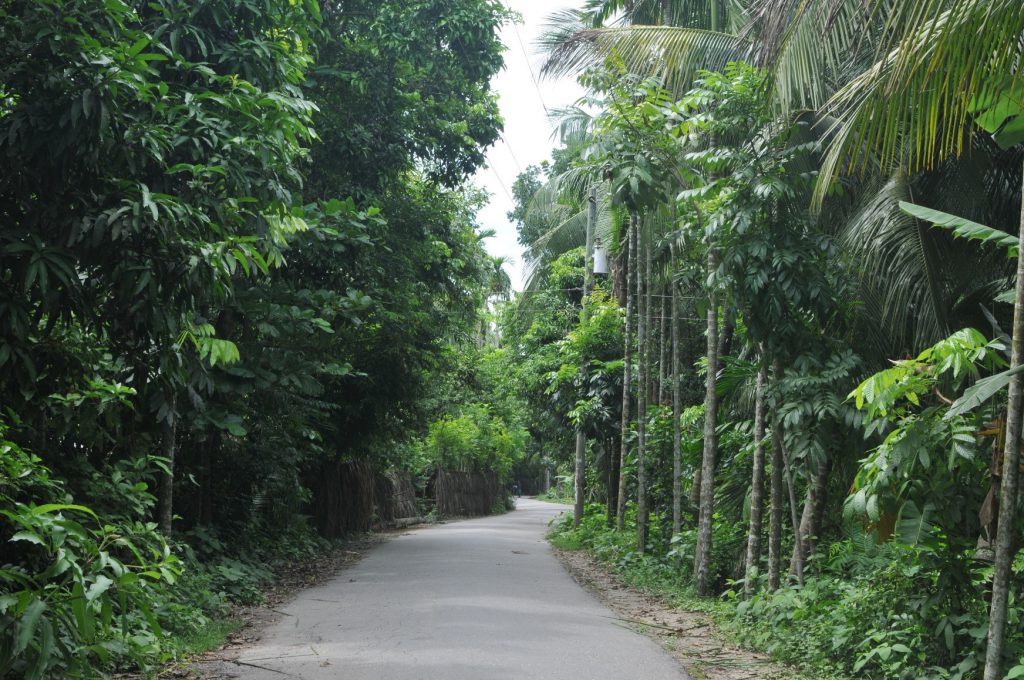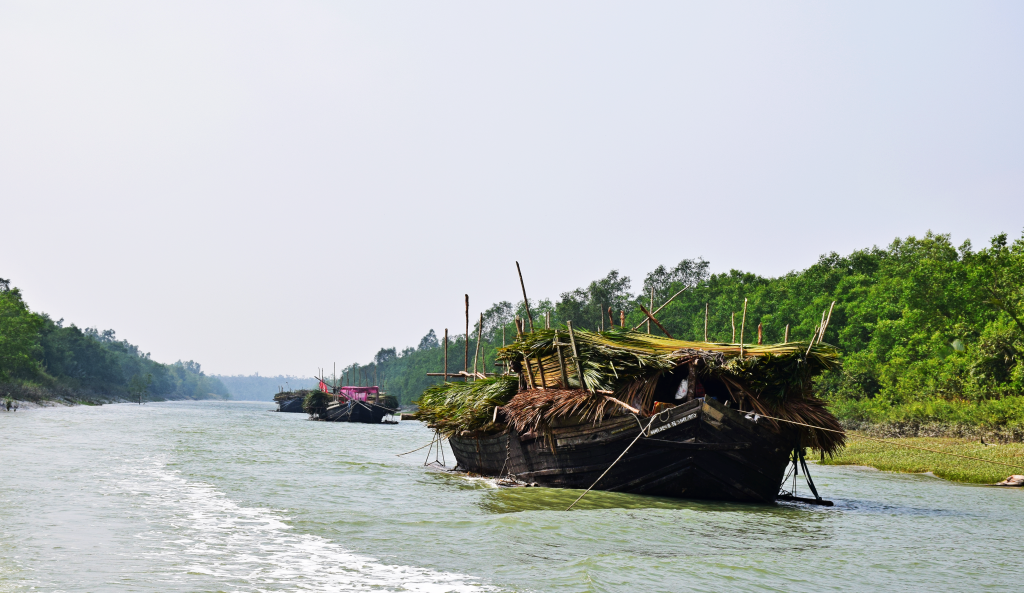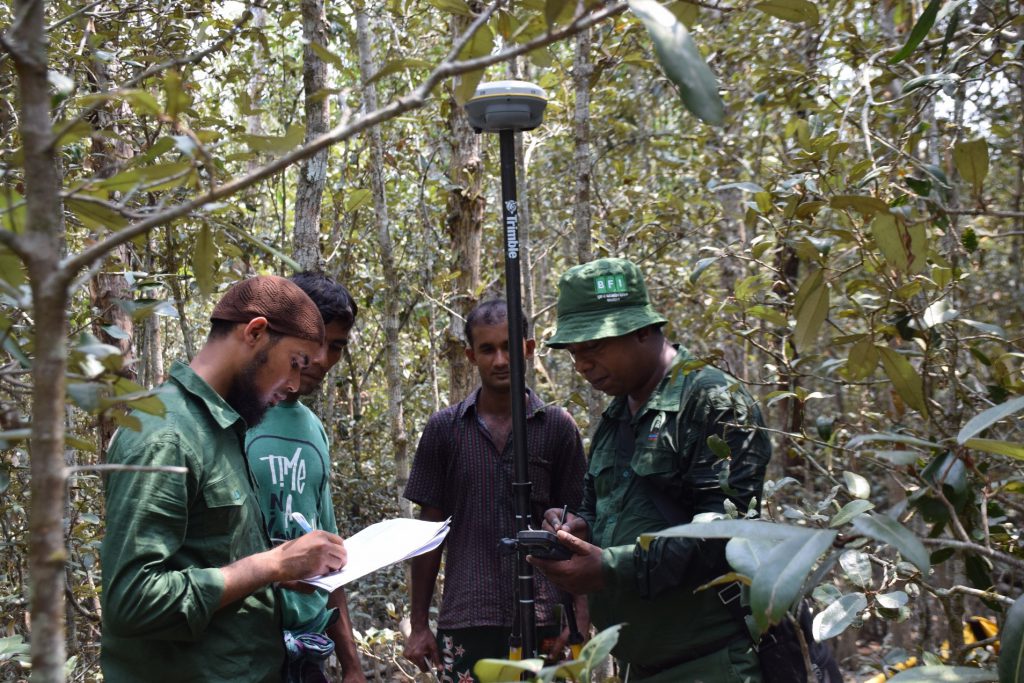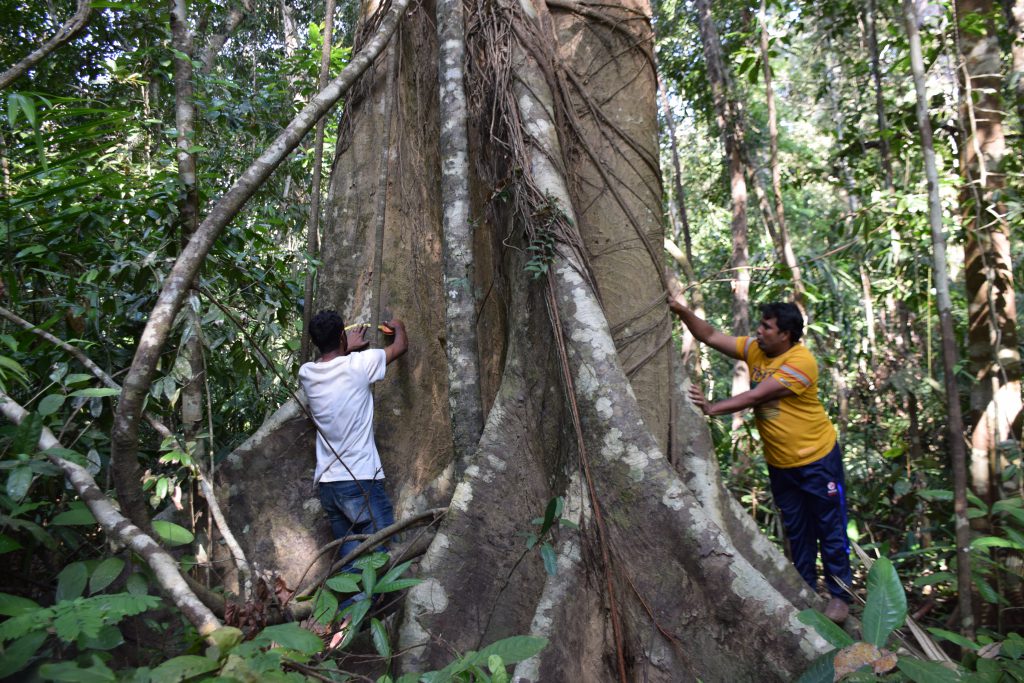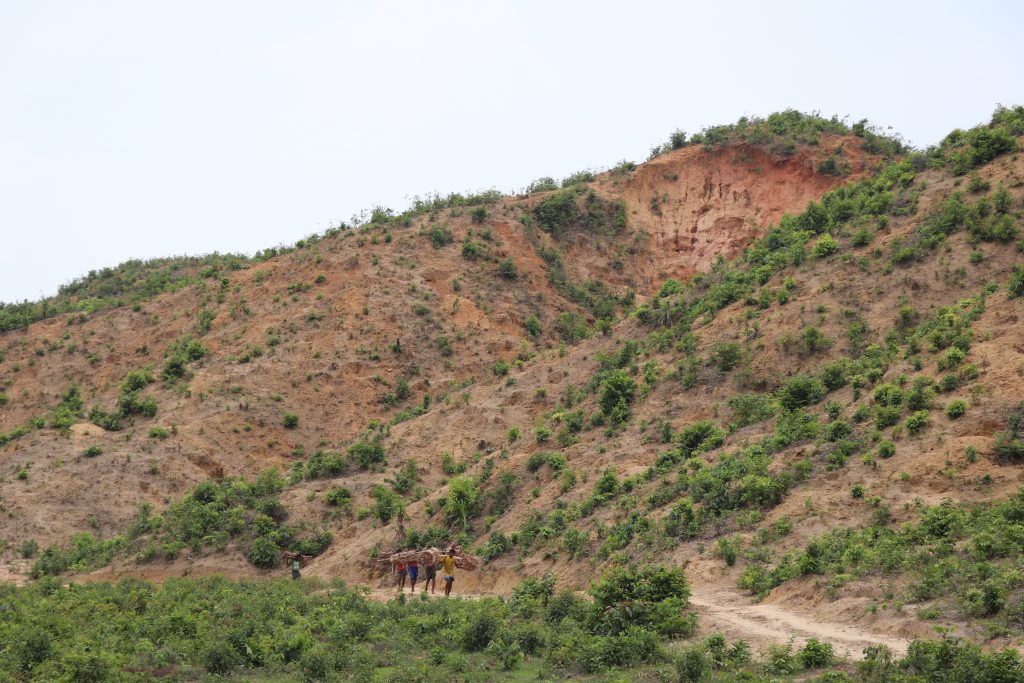BFI Photo Log
Trees and forests in Bangladesh have a rich story to tell
From the commercially important Mahoganyand Mango trees, to the iconic Sundri mangrove tree, to the rare and critically endangered Tali tree, each occupies its own unique space in the country’s natural environment. People in Bangladesh are linked to their surrounding trees and forests for subsistence and livelihoods, and religious, medicinal, and even protective purposes. If care and protection are given to these precious natural resources, they will be healthy and abundant enough to continue providing valuable ecosystem services. This picture shows a patch of mixed species Hill forest in Bandarban.
Photo: ©Mahmud R.
A typical day in the Sundarban forest
Rivers boats are the best wasy for field teams to navigatethe Sundarban forest.The teams measure trees, collect soil samples, and record information on land use and natural disturbances. Pictured here is a team trying to access the centre of a plot in shallow water.
Photo: ©Mondal F.K.
Soil sampling and climate change
Soils play an important role in the global carbon cycle to help mitigate climate change. For the first time in Bangladesh, an unbiased sampling of soils across all land covers was performed to provide estimates of soil organic carbon. Soil organic carbon is the largest carbon pool in the country, accounting for 80 per cent of the total carbon found on land. In this photo, team members fight with roots to extract a sample from a dense mangrove forest in the Sundarban forest.
Photo: ©Mondal F.K.
How many people use trees and forests, and for what purposes?
Tree measurements are only half the story when it comes to understanding the importance of forests in the lives of those who use them. By interviewing 6 400 households and conducting 100 group discussions, the BFI was able to learn from where people gather local forest products and how they perceive these forest resources are changing. Men and women participated equally in order to ensure different gender perspectives. The survey found that 65 percent of all women are involved with the collection and/or selling of forest products. In this photo, interviewers organize a focus group discussion in Baghaichari Upazila, Rangamati District.
Photo: © Nazmoon N.S.
Rain or shine, the work goes on
Though teams plan their field work around the rainy season, getting wet is unavoidable in Bangladesh’s sub-tropical monsoon climate. Here Quality Control (QA/QC) teams pose in heavy rains during a training in Cox’s Bazar, organized jointly by the Forest Department, the United States Forest Service, United States Agency for International Development (USAID),, and FAO. The project, which started in 2015 and was funded by USAID, rinvolved numerous government, academic and private institutions who collaborated to produce the inventory results.
Photo: © Mondal F.K.
The value of trees for energy
Trees provide an important source of natural fuel for cooking and heating purposes for many communities. We now understand that bioenergy can be a more sustainable source of energy than coal, oil, or natural gas. The national average value of forest products used for energy and fuel is 6 100 taka (72 USD) per household per year, while for some Hill forest communities it is as high as 39 000 taka (459 USD). Moreover, when more trees are available to provide these resources, the cost to those who buy them reduces dramatically, especially in village areas. In the picture, a woman collects fuel wood from a nearby forest in Bandarban.
Photo: © Mondal F.K.
The trees outside forest matter too … a lot!
Trees grown in homestead gardens, agricultural fields, along roads and rivers, and even in urban areas, provide a number of important ecosystem services to local communities. Trees account for 66 percent of the country’s total tree volume and actually have a slightly higher number of tree species than forest areas (286 and 274, respectively). Fruit trees grown in village areas are especially valuable. On average, 9 400 taka (111 USD) per year worth of fruit is supplied to each household, and 10 percent of the fruit collected is sold. This photo shows a typical tree-lined road in Bagerhat.
Photo: © Mondal. F.K.
The benefits of trees and forests
Besides providing homes for trees and habitats for plants and wildlife, trees and forests provide an environment where nearly everyone benefits in some way. For example, as much as 10 percent of households in some village areas use trees for religious purposes, 20 percent of households living near the Sal trees use them for recreation, and 53 percent of the country uses trees for medicinal purposes. Nypa, locally known and ‘Golpata’, is particularly useful for roof thatching, foods, medicinal purposes,and as a source of fuel wood. The photo shows the transportation of Nypa from the mangrove forest, part of the 54.5 million taka (0.64 million USD) worth of Nypa collected by nearby communities each year.
Photo: © Mondal F.K.
High tech forestry
Technology makes forest monitoring more time and cost efficient. It also helps control errors to ensure high quality data. As shown in this photo taken in the Sundarban forest, plot centres were ‘georeferenced’ with Differential Global Positioning Systems (DGPS). This means that the centre of the plot can be located by future field teams with an accuracy of a few centimeters. Additionally, trees were tagged using Radio Frequency Identification (RFID) technology, which is a microchip inserted into the bark of the tree that can be identified using a scanner. Without this technology, there is a high risk in not being able to find the plot in the future, jeopardizing the ability to accurately monitor changes over time.
Photo: ©Henry M.
Gems of the forest
Many people do not know that even though Bangladesh is a densely populated country, remote and pristine areas still remain. These areas, such as the Sangu Reserve Forest in Southeastern Bangladesh pictured here, need to be protected and monitored. Field work in this relatively undisturbed area revealed unusual sized trees, such as this Swintonia floribunda, or ‘Civit’ tree. One of the tallest trees found in the BFI was a Civit tree of 45.3 metres. Civit is used as a construction material, especially plywood. Knowing where large or rare trees occur help forest managers to plan conservation strategies.
Photo: ©Mahmud R.
Unhealthy forest landscapes
Though the climate and soils of Bangladesh potentially support healthy, diverse, and productive forests, over-extraction leads to deforestation of these landscapes, such as this area in Cox’s Bazar. Encroachment and fire were the most commonly observed human caused disturbances within forest areas. Knowing where these activities occur helps to ensure proper forest governance and inform forest restoration activities.
Photo: ©Henry M.
Overlooked sources of energy and carbon
Living trees and soils are the largest sources of carbon, but they are not the only sources. Branches, leaves, and other dead wood debris also contain carbon and are used for fuel. Samples like the ones below were collected and analyzed at Khulna University’s Nutrient Dynamic Laboratory. It was found that these resources are important to all rural communities in the country, and on average 1 d442 kg of material were collected per household per year. The Hill zone had the highest density of dead wood materials at 5.16 tons per hectare.
Photo: ©Mondal F.K.
Landscape restoration efforts offer hope to overcome widespread forest degradation
Although forest cover is diminishing gradually, the Forest Department is trying to mitigate this loss by establishing new plantations along roadsides, and in hilly and coastal areas. In fact, tree cover is actually increasing in some coastal areas, largely due to government programmes, such as this coastal plantation on the island of Maheshkhali, Cox’s Bazar District . According to the socioeconomic survey, more than 48 000 households received seedlings from the Forest Department over a 12-month period.
Photo: ©Arafat M. F.


